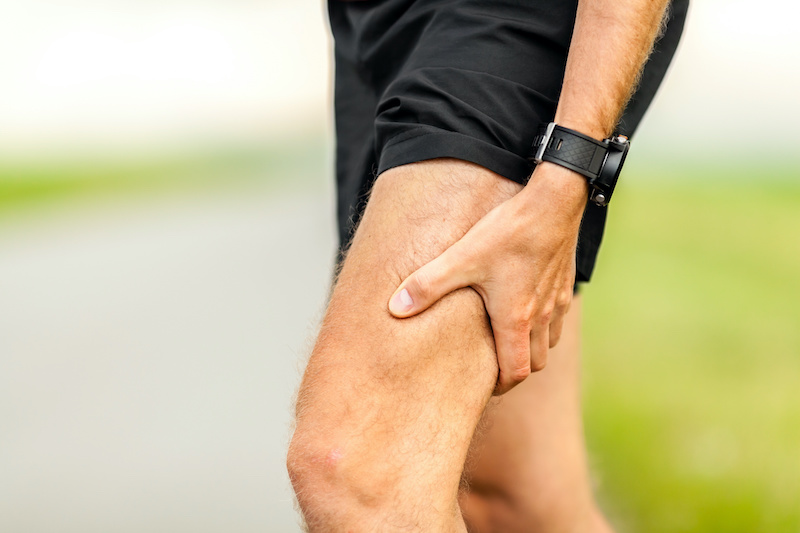The hamstring is found along the back of the thigh and comprises of a group of muscles that extend the hip (backwards movement of the leg) and flex (bend) the knee. A hamstring tear, sometimes called a “pulled hamstring”, is very common in sports that involve sprinting such as football and rugby league. It most often occurs at the junction of the muscle and its tendon.
Symptoms of a hamstring tear are:
- A sudden sharp pain at the back of the leg, particularly during sprinting.
- Reduced length of the hamstring during stretching and pain with stretching.
- Swelling and bruising along the back of the thigh.
- Moderate to severe tenderness over the area of the tear.
- Difficulty walking and running.
Hamstring tears are graded according to severity.
Features of a Grade 1 strain are: 
- Tightness at the back of the thigh.
- Some discomfort with walking.
- Minimal or no swelling and bruising.
Features of a Grade 2 strain are:
- The person may limp.
- There may be sudden twinges of pain with activity.
- More considerable pain may occur and bruising may surface after a few days.
- Bending the knee against resistance causes pain.
- The person may have difficulty straightening the knee.
Features of a Grade 3 strain are:
- There is severe pain.
- Walking is severely affected and crutches may be needed.
- Severe pain occurs when the knee is bent.
- Swelling occurs immediately and there may be considerable bruising after a few days.
The first 48 hours following injury are critical. You should begin the RICE protocol immediately (rest, apply ice and compression and elevate the affected area). Rest is important to prevent further injury and give the muscle time to heal. A Grade 1 strain should be rested for about three weeks, a Grade 2 for four to six weeks, while a Grade 3 strain may take up to three months. Surgery may be indicated for a Grade 3 strain. Ice should be applied for twenty minutes (never apply directly to the skin) every two hours while the leg is resting in an elevated position. A compression bandage helps reduce swelling and bleeding in the tissues.
Our physiotherapy treatment for a hamstring strain will be RICE for the first 48 hours, followed by gentle passive stretching exercises. We will then use massage techniques to help break down and remove scar tissue as well as to increase blood flow to the area, which will speed up the recovery process. We may use pain-relieving modalities such as ultrasound and electrical stimulation as well as trigger point therapy. If you need to use crutches, we will train you in using these and get you started on a rehabilitation program. This will include specific hamstring strengthening exercises, followed by cross training exercises before a graduated return to play.
Please note: this information should serve as a guide only. When in doubt always seek advice from Southside Physiotherapy & Sports Injury Centre or your GP.
